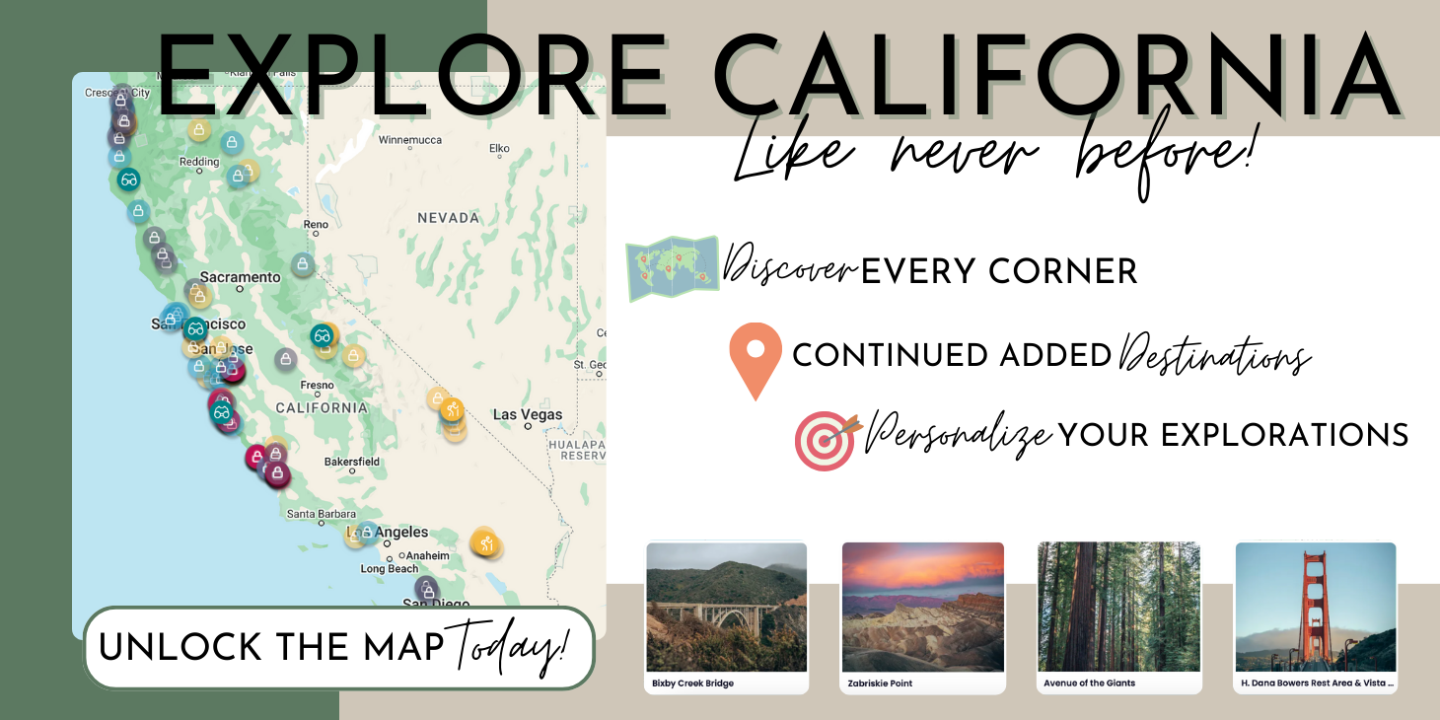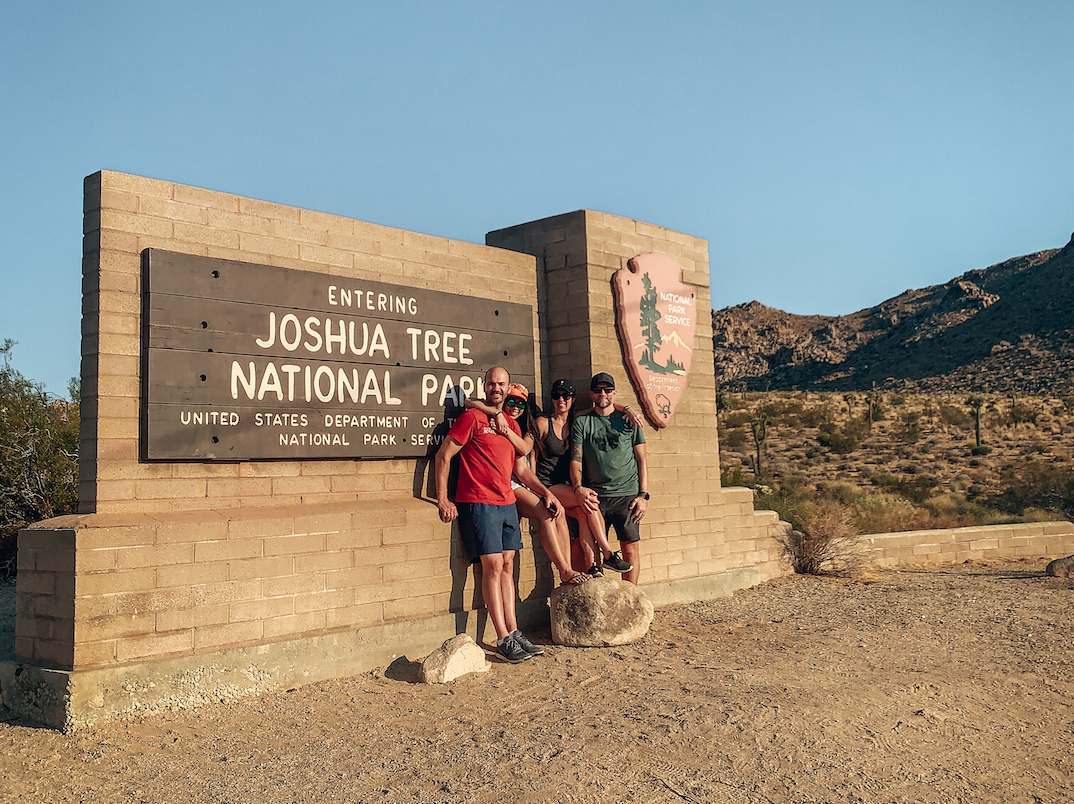
Extreme temperatures, dry desert, plants that can cause extreme pain, at first glance, one might question going to a place like Joshua Tree National Park. But we’re here to tell you, IGNORE ALL OF THAT. Vast mountains, luscious flora, super unique trees and plant life, oases, incredible night skies… There are a ton of reasons why you SHOULD go. So we’re going to focus on helping you plan your trip to Joshua Tree National Park.
JOSHUA TREE NATIONAL PARK: HOW TO PLAN YOUR VISIT
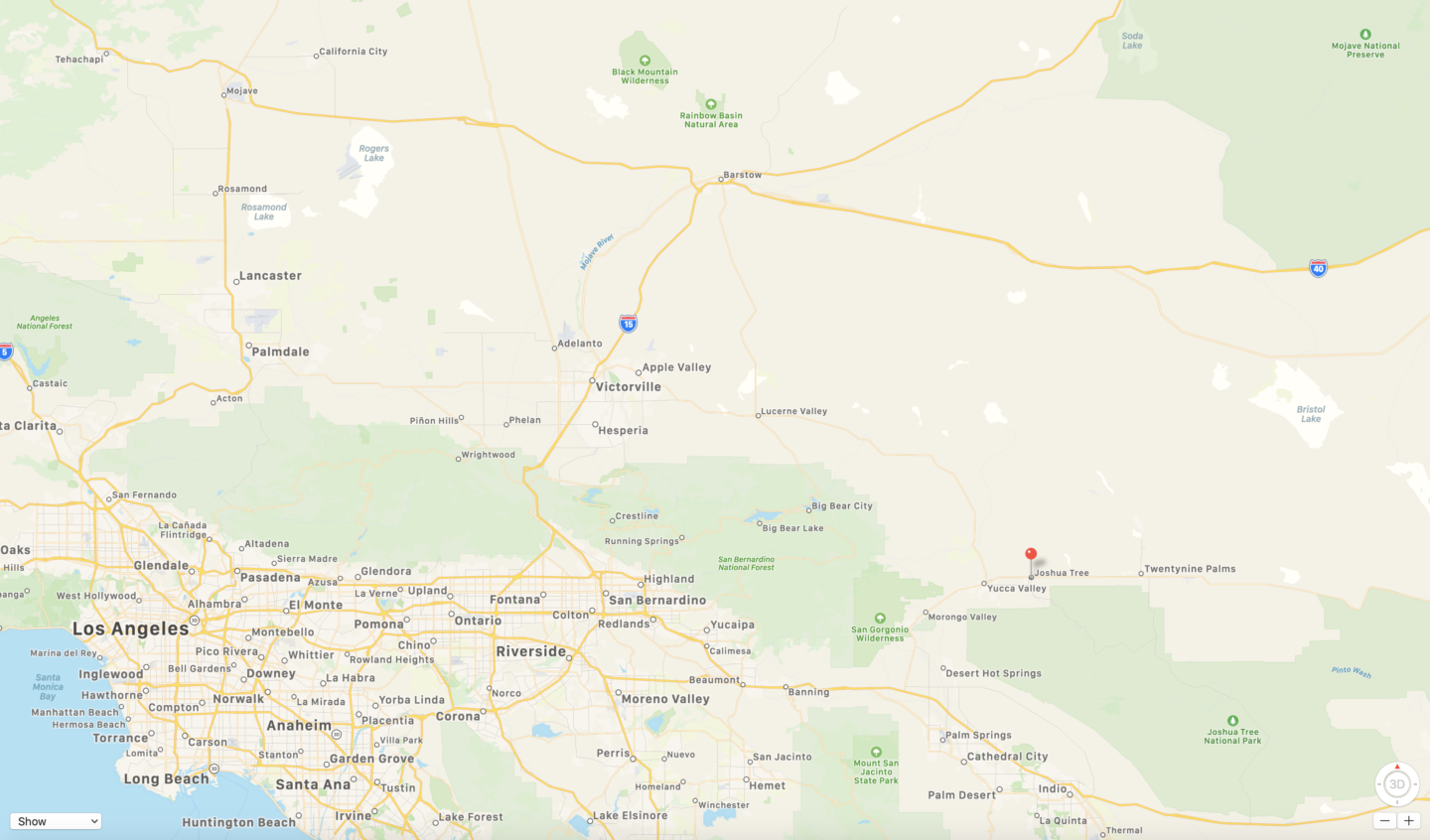
Joshua Tree is a small town nestled in Southern California, about 2 hours east of Los Angeles near Palm Springs. It’s most known for its National Park, Joshua Tree National Park and the tree which it is named after, the super unique and iconic Joshua Tree (which is a type of yucca). Joshua Tree National Park was originally designated as a National Monument, but converted to a National Park in 1994. The park spans almost 800,000 acres and is split between the higher Mojave and lower Colorado deserts.
WEATHER AND CLIMATE
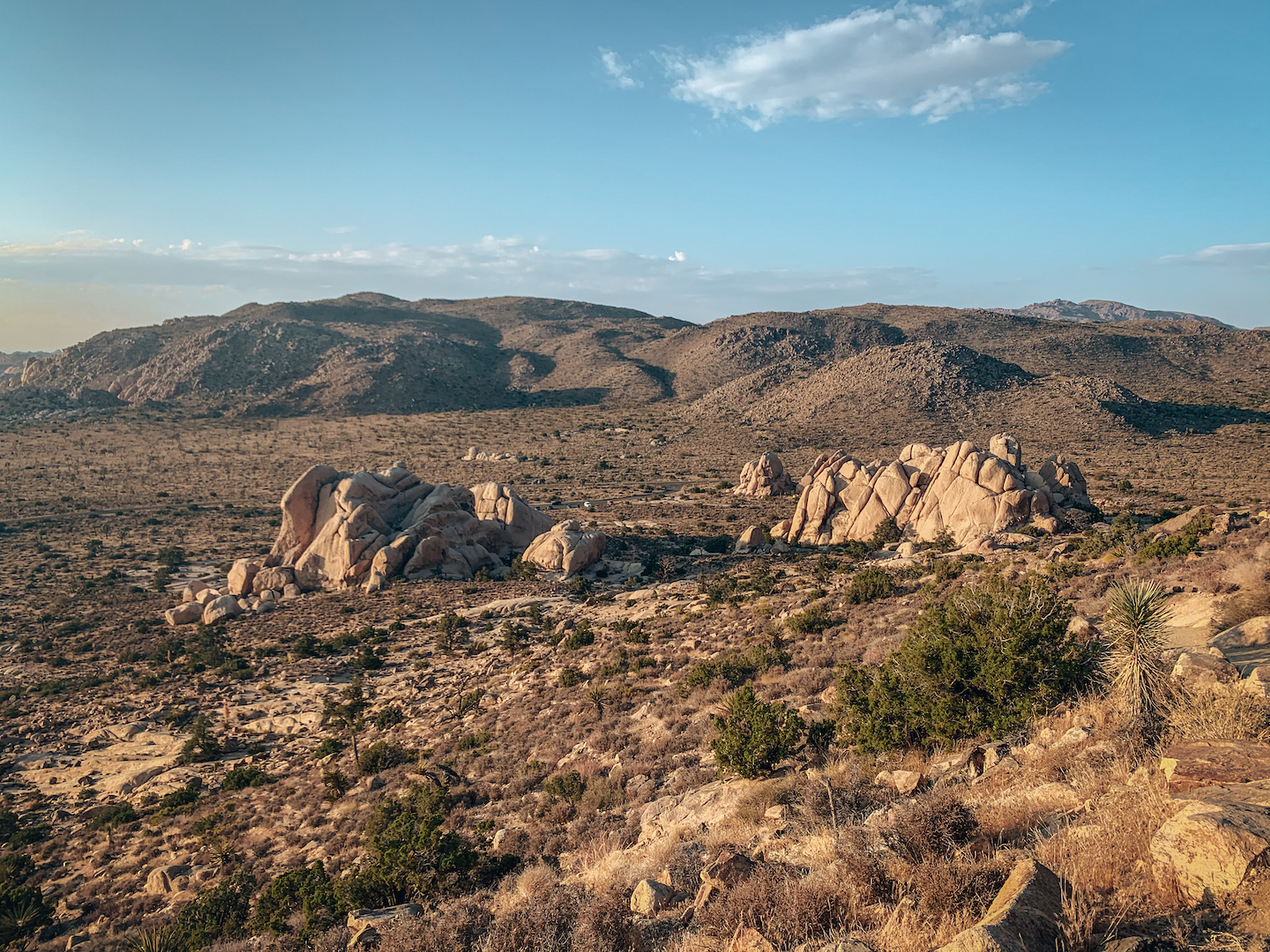
Joshua Tree National Park is considered a hot desert climate with temperatures easily reaching in to the 100ºs (F) during peak summer months. Between the low humidity/dry air, high temperatures, dirt and dust, it’s a place where you will need to stay hydrated through out the day. Especially if you plan to do any of the hikes. Despite being a relatively flat area, there are a number of mountains which have hikes taking you up to around 2,000ft. Combine all of these elements and you have yourself a place that can really have an impact on your body. So plan to bring plenty of water and sunscreen, and take plenty of breaks in between activities to rest and recover.
WHERE TO STAY
Joshua Tree National Park actually has 9 different campgrounds within the park that you can stay at. Many of these are first come first serve. But between the months of September and May there are a number where you can reserve a spot. The campgrounds do have fees ranging between $15 and $25 per night, even for the first come first serve locations. Many of the grounds have at least pit toilets, tables and fire grates, while only a few have water and flush toilets. Additionally, there are a number of restrictions and regulations for these campgrounds depending on time of year. So make sure you read up on them before planning your trip.
Outside of the park there are plenty of places to stay within a 10-20 minute drive of the park. Along the 29 Palms Highway which runs parallel to the north side of the park are a number of hotels, motels and inns. But our recommendation, stay at an Airbnb. Some of THE coolest Airbnbs we’ve ever seen are in Joshua Tree.
JOSHUA TREE ACRES
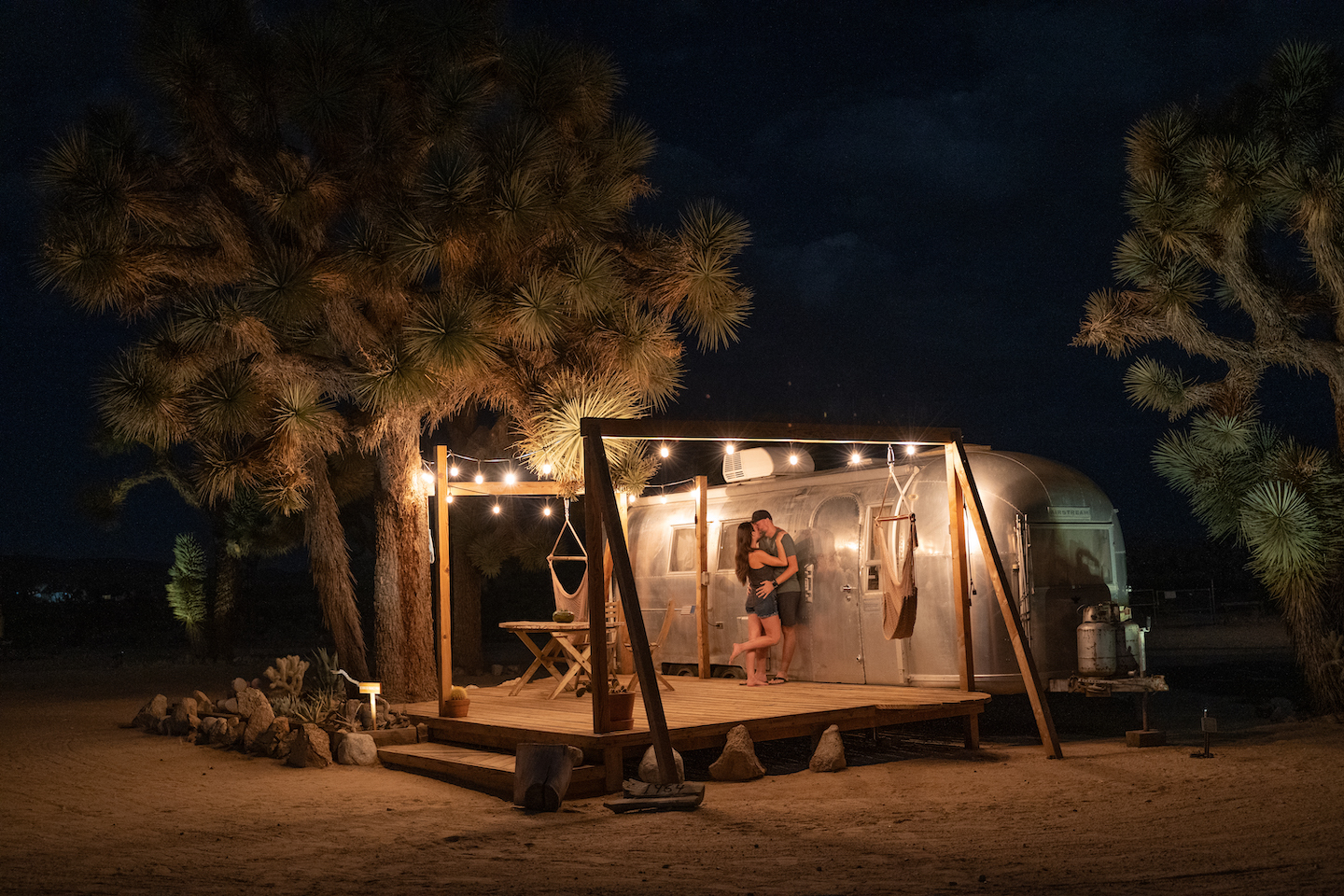
We opted for Joshua Tree Acres which is a small site about 20 minutes north of the park. Joshua Tree Acres has 5 different vintage Airstreams all of which have been renovated and updated to be individual camper sites. Right in the center of the grounds is a shared clubhouse with a shower, toilet, indoor and outdoor kitchen with all the cooking tools and appliances one would need. Additionally you’ll find two outdoor bathtubs, an outdoor solar shower, a hot tub, and a dipping pool. For our stay, we stayed in the Sound of Silence 1964 Airstream, while our close friends stayed in the Piece of The Sky 1975. We were fortunate enough to have the entire place to ourselves. The hosts were incredible and super communicative.
There are quite a few other incredible Airbnb’s which you can check out in Joshua Tree. Like the Joshua Tree Cabin, SkyHouse Joshua Tree, or Dome in the Desert.
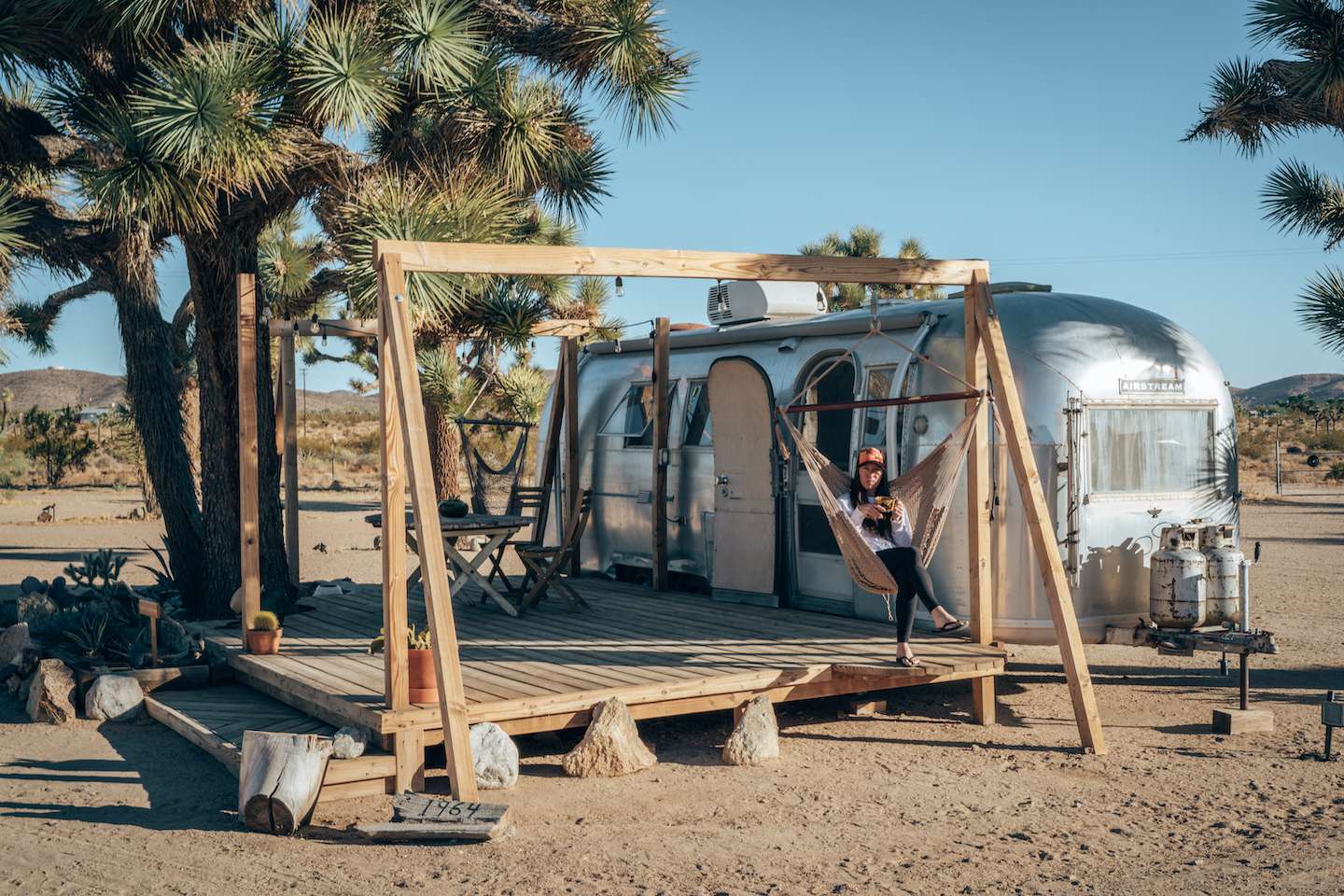
WHAT TO BRING
Depending on where you’re staying, what type of trip you’re planning, the things you need to bring may differ. Food, snacks, drinks, games, camera, etc. So we will focus on the things you should plan to bring no matter where you’re staying.
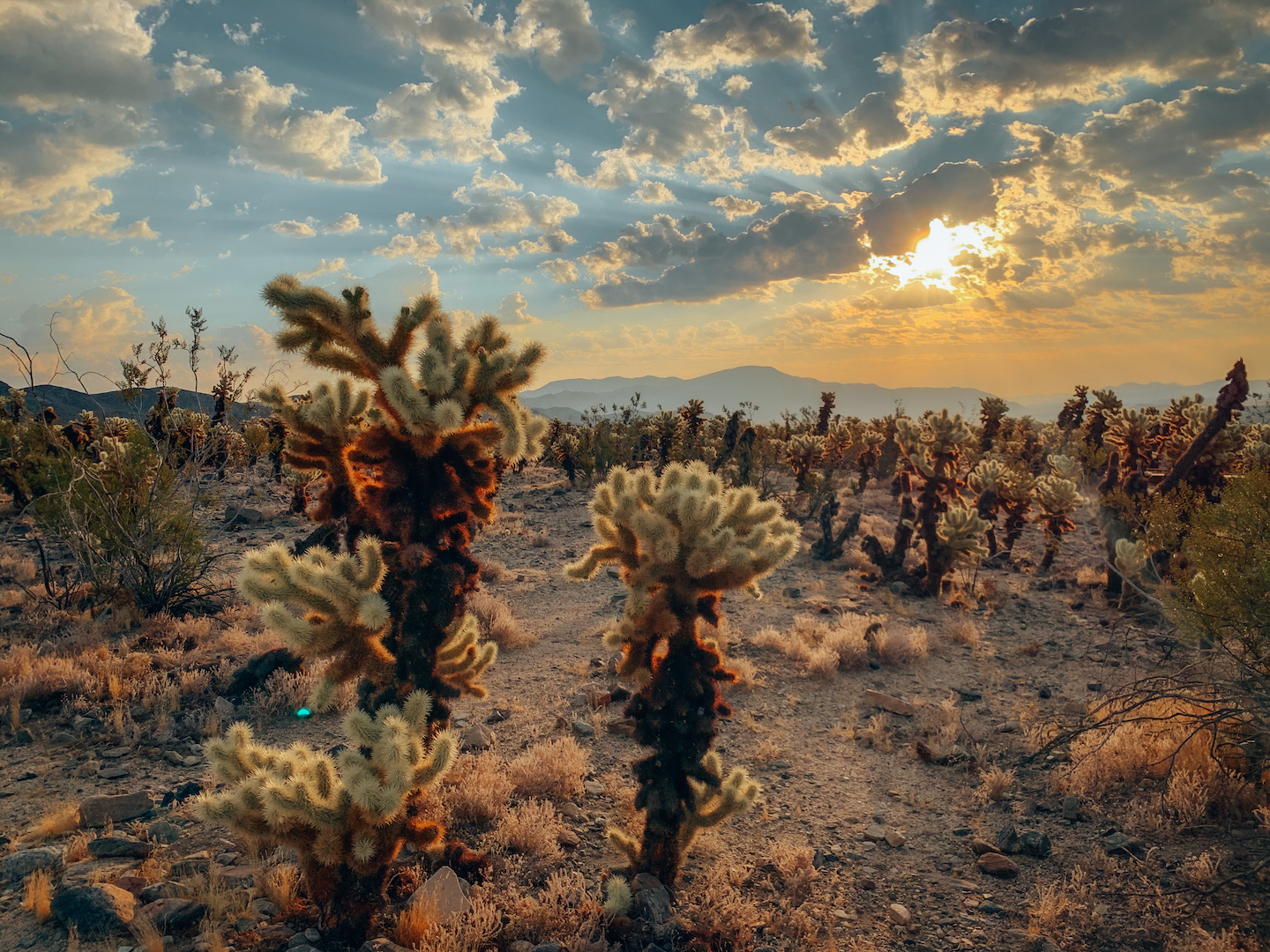
Given the weather and climate in Joshua Tree, the immediate items we know you’ll want to bring (or have access to) are plenty of water and sunscreen. The last thing you want to have happen is getting sunburnt or dehydrated on day 1. So plan accordingly, drink TONS of water (they recommend 1 gallon per day per person) and put on that sunscreen.
Even if you aren’t planning on doing any major hiking, you’ll want to bring good shoes with traction. This is NOT a flip-flop/sandal wearing place. Even the flat terrain has plants and things you do not want to come in contact with. Which brings us to the next item, pants. While not necessary, and you can easily get by with shorts, you will absolutely want to consider wearing pants. Especially if you do plan on doing any hiking, or exploring the Cholla Cactus Garden. So bring at least one pair.
Lastly, make sure you bring a good bag or pack that can carry all of these items in when you head out in to the park. You are going to want to hydrate, snack and reapply sunscreen regularly. The last thing you want to happen is to be in the middle of a 4-mile hike and in need of water or sunscreen. So pack accordingly.
WHEN TO GO

We already touched on just how hot it can get in Joshua Tree, so if you are not a fan of super hot weather, then you may want to consider when you go. And despite being a place that gets as hot as it does, the temperatures can actually get quote low in the winter months (30ºF/-1ºC). When looking at just temperatures alone, our preference would be between March and May, or October and November. Temperatures are cool enough to be comfortable, but not cold enough to have to pack a ton of cold weather clothing. Unfortunately, these months also happen to be the peak months as a result of these moderate temperatures. So if you’re wanting to avoid crowds, then the hotter months may be better suited for you. Ultimately it is all based on what your wants and needs are.
ENTRY TO JOSHUA TREE NATIONAL PARK
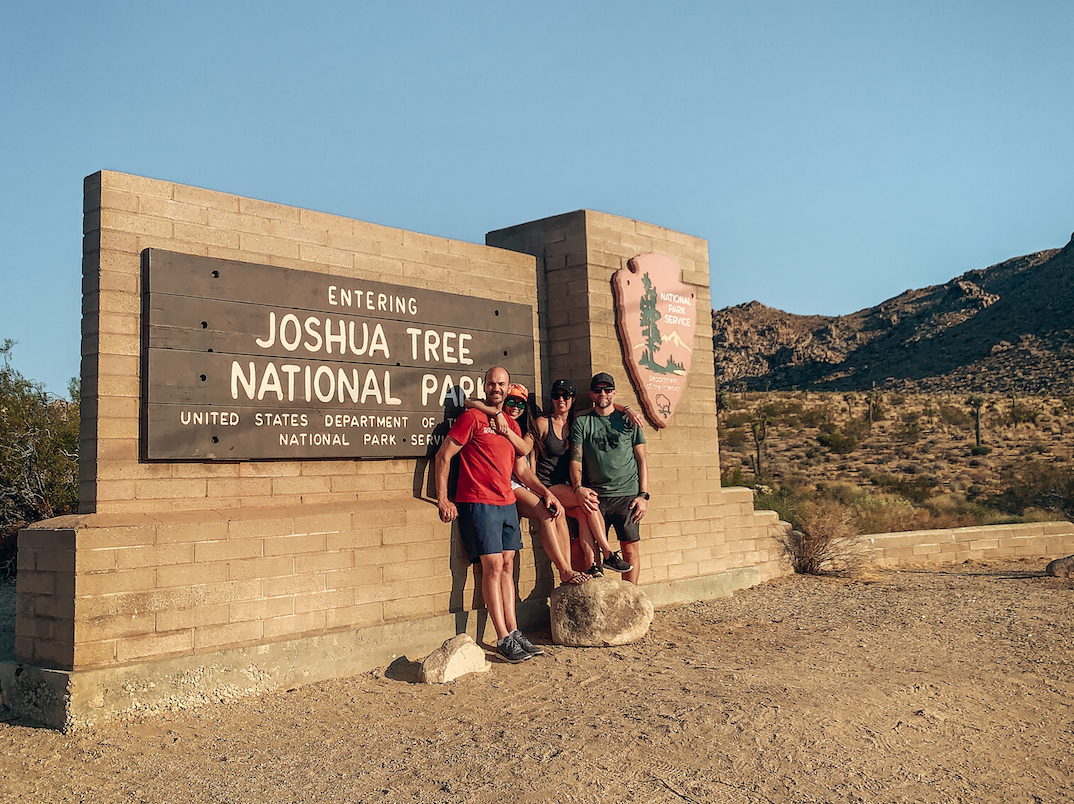
Being a National Park, there is an entry fee required. The good news, is not only is it not expensive, but there are also multiple options. A single vehicle pass is $30 and is good for 7 days from first entry. You can also get an annual park pass to Joshua Tree specifically for $55. But if you’re anything like us, and love visiting National Parks, you may want to consider getting the America The Beautiful Pass. This pass gives you free entry to all National Parks in the U.S. for just $80. They do also discounted Senior passes as well as free passes for current U.S. Military.
WHAT TO WATCH OUT FOR
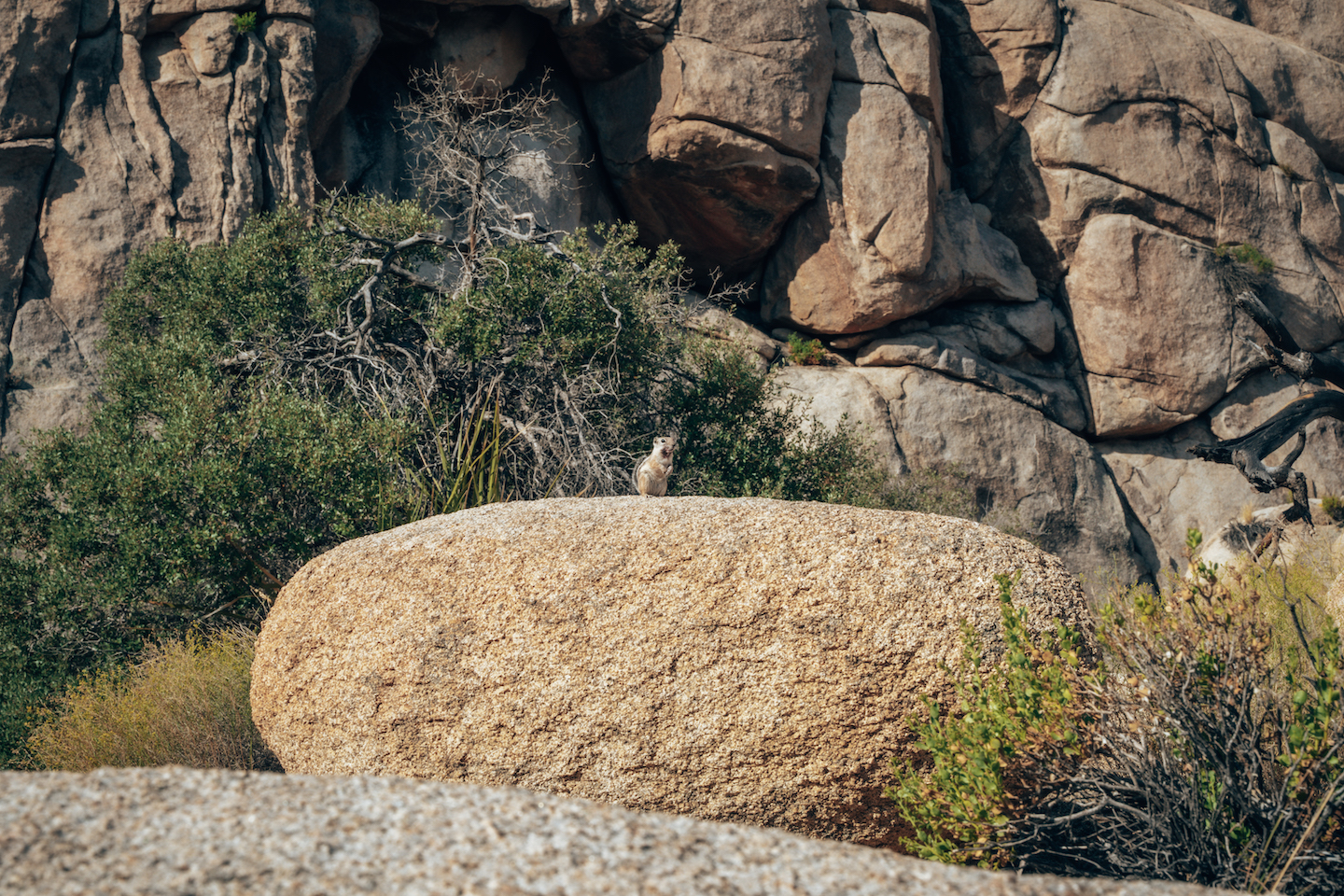
Being a National Park, there are a number of different things to be aware of when entering and exploring the park. Despite being a hot dry climate, the park is home to an enormous amount of animals: bats, tortoises, lizards, snakes, bears, foxes, rabbits and hares… In fact, the park has 57 different species of mammals, 46 species of reptile, 50 species of birds and much much more. We found though that the most common that you’ll find are mice, kangaroo rats, rabbits and hares. So if you’re afraid of rodents, beware. Click here to read more on all the different animals in Joshua Tree.
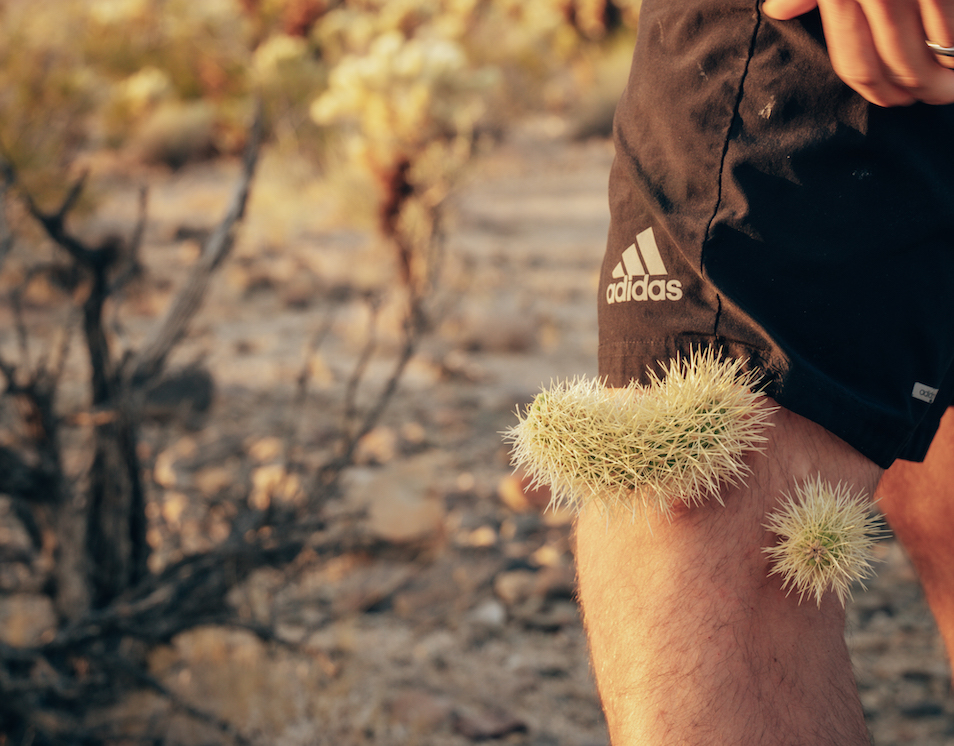
CHOLLA CACTUS
We found though, that plant life can actually be the most dangerous. One in particular: the Cholla Cactus [pronounced “choy-ah”]. If you really want to get a sense of how dangerous these plants are, just do a quick youtube search of Cholla Cactus, and you will find a plethora of videos of people being “attacked” by these super interesting plants.
When looking at this cactus, it looks like what you would expect from a cactus plant. Lots of needles. But what you don’t know, is just how dangerous these needles are.
First of all, each little bulb or leaf which is covered in needles, can easily fall off and on to the ground. One might think that simply wearing good shoes or hiking shoes would be sufficient, but what you don’t know is that the needles on these “leaves”, can go right through the soles of your shoes and in to your skin. If that’s possible, imagine what they can do when they come in contact with your exposed skin. And once they’re in, they do not come out easily. Each needle, is covered in hundreds of micro-needles, so when you attempt to pull these out, which is near impossible mind you, the needles pull. And then they dig in deeper.
So, our recommendation, if you’re going anywhere near these things, watch every one of your steps, wear really good shoes, and wear thick pants. You’ll thank us later. Trust us.
HOW MUCH TIME TO PLAN FOR
Joshua Tree is the 15th largest National Park in the U.S., so there’s a fair amount of ground to cover. One of the beauties of the National Park though, is just how accessible everything is. Park Blvd and Pinto Basin Rd are really the only two roads through the park, which connect in the middle. And depending on just how much you want to do, will really dictate how much time to plan for. We ultimately spent two full days in the park and were able to cover a good amount of ground. You could theoretically do a single day trip in the park and do a lot, but it would require mid-day hiking and exploring, which we would not recommend, especially during the hotter months. Our recommendation, a minimum of two day, and a maximum of four to five.
HAVE FUN
Lastly, have fun. This is a super fun and unique park, with tons to do and see. Head over to our 5 MUST-DO ACTIVITIES IN JOSHUA TREE NATIONAL PARK for more inspiration! We hope this helped you plan your trip to Joshua Tree.
